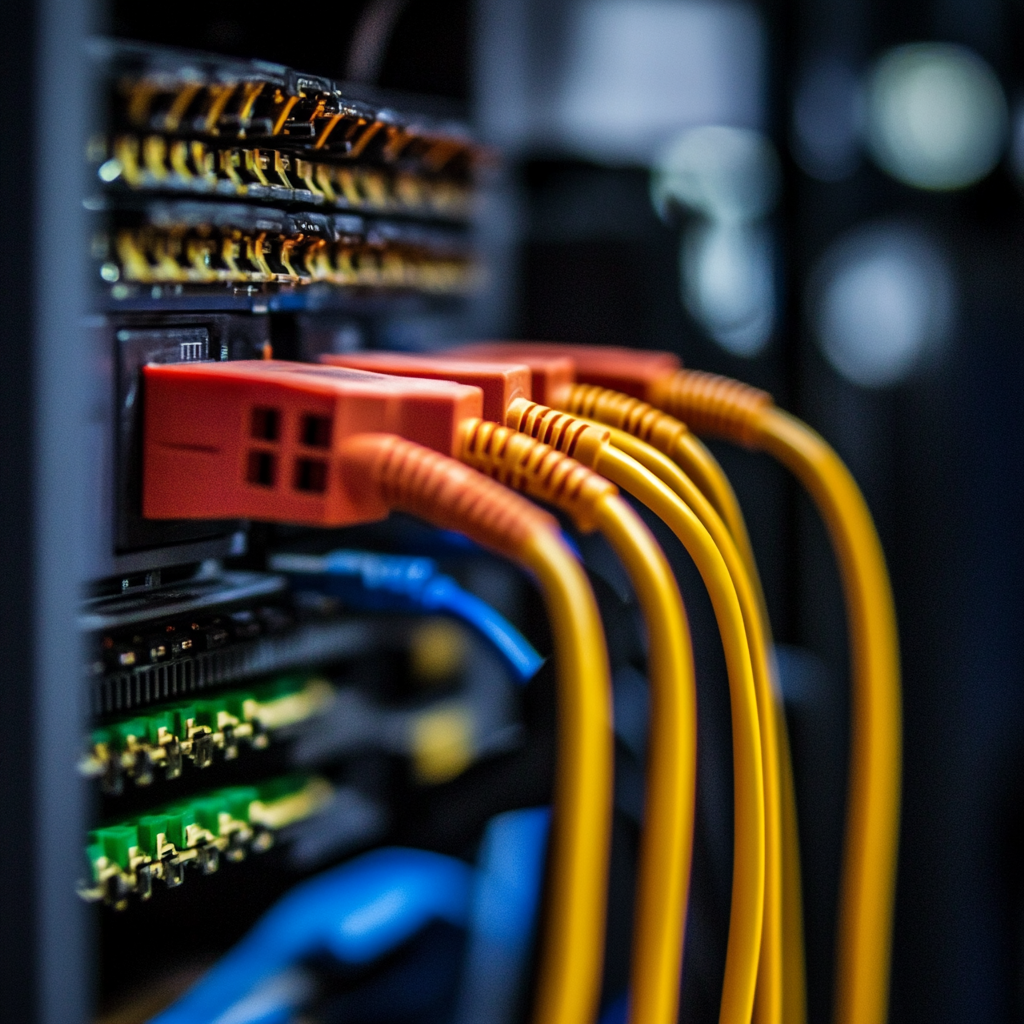HomeFi: Affordable Wireless Internet for Rural America
Tue Apr 29 2025
|Internet ServicesHomeFi is a new and exciting concept in the world of home internet connectivity. It combines the best features of traditional home Wi-Fi with advanced technologies to create a seamless and powerful internet experience throughout your entire home

HomeFi is a new and exciting concept in the world of home internet connectivity. It combines the best features of traditional home Wi-Fi with advanced technologies to create a seamless and powerful internet experience throughout your entire home. HomeFi aims to eliminate dead spots, boost speeds, and provide reliable coverage in every corner of your living space.
Unlike standard Wi-Fi routers, HomeFi systems use multiple access points or nodes that work together to create a mesh network. This means that instead of relying on a single router to broadcast your internet signal, several devices spread throughout your home work in unison to deliver consistent and strong connectivity.
The beauty of HomeFi lies in its simplicity for users. Once set up, these systems often manage themselves, automatically choosing the best channels and frequencies to optimize your connection. They can also prioritize devices that need more bandwidth, ensuring that your video calls don’t buffer while someone else is streaming a movie.
Benefits of HomeFi
HomeFi offers numerous advantages over traditional home Wi-Fi setups. One of the most significant benefits is improved coverage. With multiple nodes placed strategically around your home, HomeFi can reach areas that were previously Wi-Fi dead zones, like basements, attics, or outdoor spaces.
Speed is another area where HomeFi shines. By creating a mesh network, these systems can often deliver faster internet speeds to your devices, no matter where they are in your home. This is especially helpful for bandwidth-hungry activities like 4K video streaming or online gaming.
Ease of use is a hallmark of HomeFi systems. Many come with user-friendly apps that make setup and management a breeze. These apps often provide insights into your network usage, allow you to set up guest networks, and even let you control which devices have access to the internet.
Security is also enhanced with HomeFi. Many systems come with built-in security features like automatic firmware updates and advanced encryption. Some even offer parental controls, allowing you to manage and monitor your children’s internet usage.
How HomeFi Works
HomeFi systems operate on the principle of mesh networking. In a mesh network, each node (or access point) connects directly to the others, creating multiple paths for data to travel. This means that if one node experiences interference or goes offline, the others can pick up the slack, ensuring uninterrupted connectivity.
When you connect a device to your HomeFi network, it automatically connects to the node with the strongest signal. As you move around your home, your device seamlessly switches between nodes without any noticeable interruption. This process, known as “roaming,” happens in the background without any action required on your part.
HomeFi systems often use advanced technologies like beamforming and MU-MIMO (Multi-User Multiple-Input Multiple-Output) to further enhance performance. Beamforming focuses the Wi-Fi signal directly to your devices, rather than broadcasting it in all directions. MU-MIMO allows multiple devices to communicate with the router simultaneously, reducing congestion on your network.
Setting Up HomeFi
Setting up a HomeFi system is typically straightforward, even for those who aren’t tech-savvy. Most systems come with clear instructions and intuitive apps to guide you through the process. Here’s a general overview of what you can expect:
- Connect the main node to your modem using an Ethernet cable.
- Power on the main node and wait for it to start up.
- Download the manufacturer’s app on your smartphone and follow the setup instructions.
- Place additional nodes around your home, plugging them into power outlets.
- The app will guide you through adding these nodes to your network.
Once set up, your HomeFi system will usually optimize itself automatically. However, you can use the app to fine-tune settings, set up guest networks, or manage connected devices.
It’s important to position your nodes strategically for the best coverage. Place them in open areas, away from large metal objects or appliances that might interfere with the signal. For multi-story homes, try to place nodes on different floors to ensure comprehensive coverage.
Choosing the Right HomeFi System
When selecting a HomeFi system, there are several factors to consider:
- Home size: Make sure the system you choose can cover your entire living space. Larger homes may require more nodes.
- Internet speed: Choose a system that can handle your internet plan’s maximum speed.
- Features: Look for systems with features that match your needs, such as parental controls, device prioritization, or smart home integration.
- Expandability: Consider whether you might need to add more nodes in the future.
- Price: HomeFi systems range from budget-friendly to premium options. Determine your budget and find a system that offers the best value for your needs.
Some popular HomeFi systems include Google Nest Wifi, Amazon eero, and Netgear Orbi. Each has its own strengths, so it’s worth researching and comparing before making a decision.
HomeFi vs Traditional Wi-Fi
While traditional Wi-Fi routers have served us well for years, HomeFi systems offer several advantages:
- Better coverage: HomeFi eliminates dead spots by using multiple nodes.
- Consistent speeds: Mesh technology ensures similar speeds throughout your home.
- Easier management: User-friendly apps make network management simple.
- Seamless roaming: Devices switch between nodes without disconnecting.
- Scalability: You can easily add more nodes to expand coverage.
However, traditional Wi-Fi might still be suitable for smaller homes or apartments where a single router can provide adequate coverage. It’s also typically less expensive upfront, although the performance benefits of HomeFi can outweigh the cost difference for many users.
HomeFi and Smart Homes
HomeFi systems are well-suited for smart homes. Many HomeFi devices can act as smart home hubs, allowing you to control various IoT (Internet of Things) devices through a single app. This integration can simplify your smart home setup and improve overall performance.
For example, some HomeFi systems can work with voice assistants like Amazon Alexa or Google Assistant. This allows you to control your network with voice commands, such as turning on a guest network or pausing the internet for specific devices.
HomeFi’s robust coverage also ensures that your smart home devices, from security cameras to smart thermostats, maintain a stable connection no matter where they’re placed in your home.
The Future of HomeFi
As technology continues to advance, we can expect HomeFi systems to become even more powerful and feature-rich. Some potential developments include:
- Integration of Wi-Fi 6 (and eventually Wi-Fi 7) for even faster speeds and better handling of multiple devices.
- Improved AI capabilities for network optimization and security.
- Enhanced integration with 5G networks for backup internet connections.
- More advanced parental controls and content filtering options.
- Increased focus on energy efficiency and sustainability.
As our homes become smarter and more connected, HomeFi will likely play an increasingly important role in managing our digital lives and ensuring we stay connected seamlessly and securely.
Is HomeFi Right for You?
HomeFi can be a game-changer for many households, but it’s not necessarily the best choice for everyone. Here are some scenarios where HomeFi might be particularly beneficial:
- You have a large home with Wi-Fi dead spots.
- You frequently use bandwidth-intensive applications like 4K streaming or online gaming.
- You have many smart home devices that need reliable connectivity.
- You want an easy-to-manage network with advanced features.
- You’re tired of Wi-Fi issues and want a more reliable solution.
On the other hand, if you have a small living space with good Wi-Fi coverage from a single router, or if you’re on a tight budget and don’t need advanced features, a traditional Wi-Fi setup might still be sufficient.
Ultimately, the decision comes down to your specific needs, home layout, and budget. Consider your current internet experience and whether the benefits of HomeFi would significantly improve your day-to-day connectivity.



